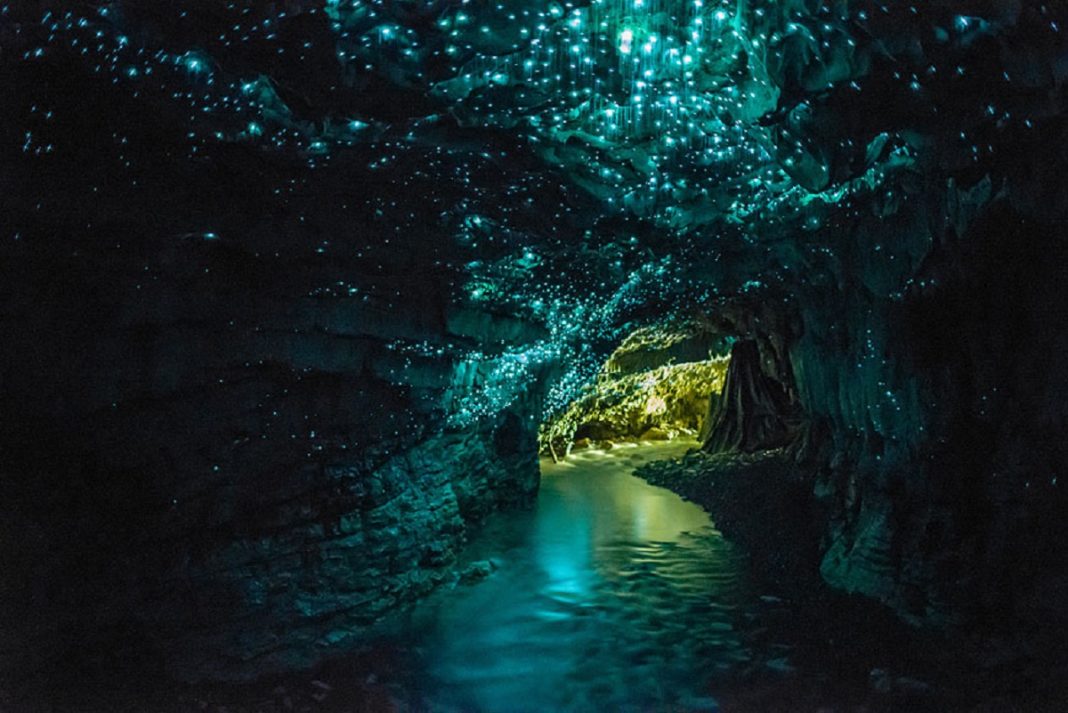The Waitomo Glowworm Caves attraction is a cave at Waitomo on the North Island of New Zealand. It is known for its population of Arachnocampa Luminosa, a glowworm species found exclusively in New Zealand. This cave is part of the Waitomo streamway system that includes the Ruakuri Cave, Lucky Strike, and Tumutumu Cave.
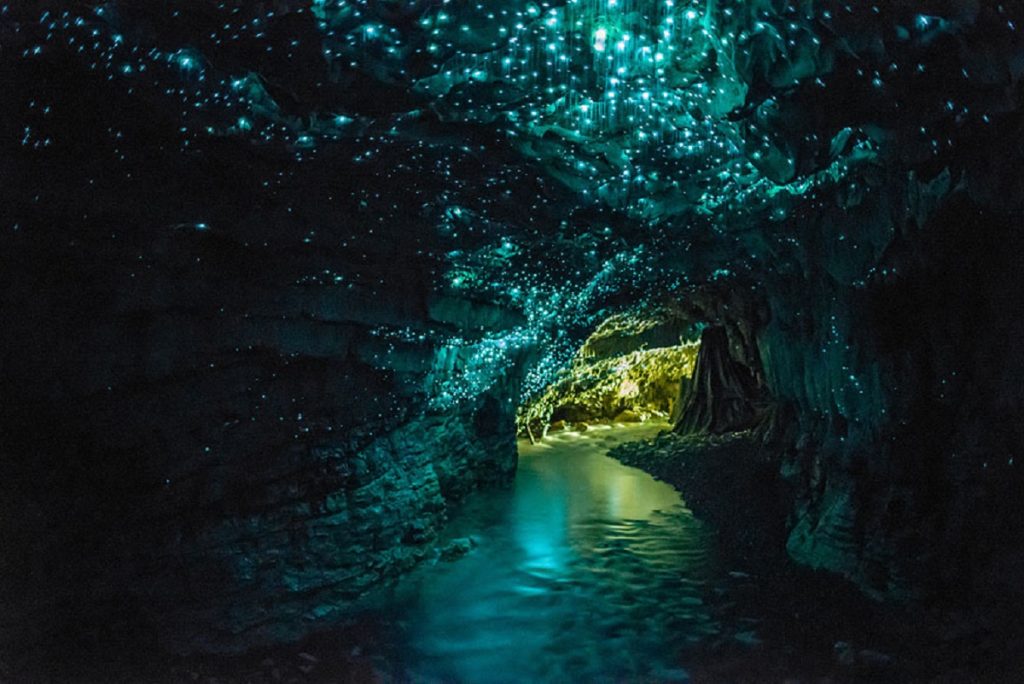
The name “Waitomo” comes from the Māori words wai, water and tomo, hole or shaft. The local Māori people had known about the caves for about a century before a local Māori, originally from Kawhia, Tane Tinorau, and English surveyors, Laurence Cussen and Fred Mace, were shown the entrance in 1884 and Tane and Fred did extensive explorations in 1887 and 1888. Their exploration was conducted with candlelight on a raft going into the cave where the stream goes underground (now the cave’s tourist exit.) As they began their journey, they came across the Glowworm Grotto and were amazed by the twinkling glow coming from the ceiling. As they travelled further into the cave by poling themselves towards an embankment, they were also astounded by the limestone formations. These formations surrounded them in all shapes and sizes.
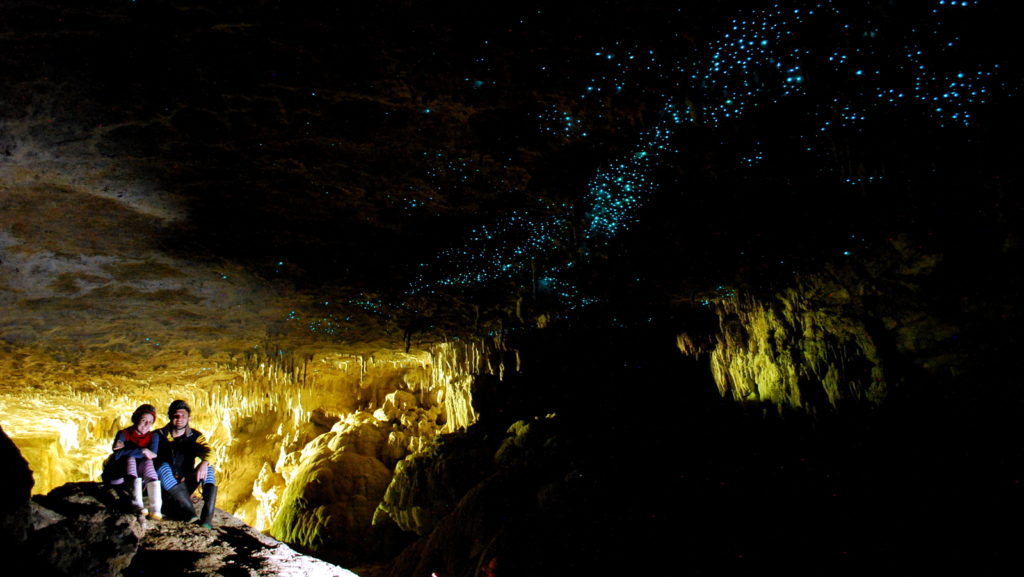
Geological and volcanic activity has created around 300 known limestone caves in the Waitomo region over the last 30 million years. The stalactites, stalagmites, and other cave formations grew from water dripping from the ceiling or flowing over the walls and leaving behind limestone deposits. The stalagmites form upward from the floor while the stalactites form from the ceiling. When these formations connect they are called pillars or columns and if they twist around each other they are called Helictite. These cave decorations take millions of years to form given that the average stalactite grows one cubic centimetre every 100 years.
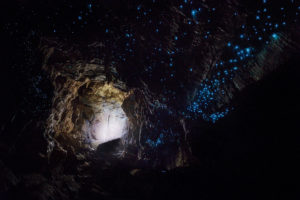
The most common animals in the caves are insects. This includes albino cave ants and giant crickets but the most renowned is the glowworm Arachnocampa Luminosa. The adults are around the size of an average mosquito. However, there are several small underground lakes that were created by freshwater creeks or brooks which are home to New Zealand longfin eels. The walls of the caves are covered with a variety of fungi including the cave flower (a distant relation to the genus Pleurotus) which is actually a mushroom-like fungus.
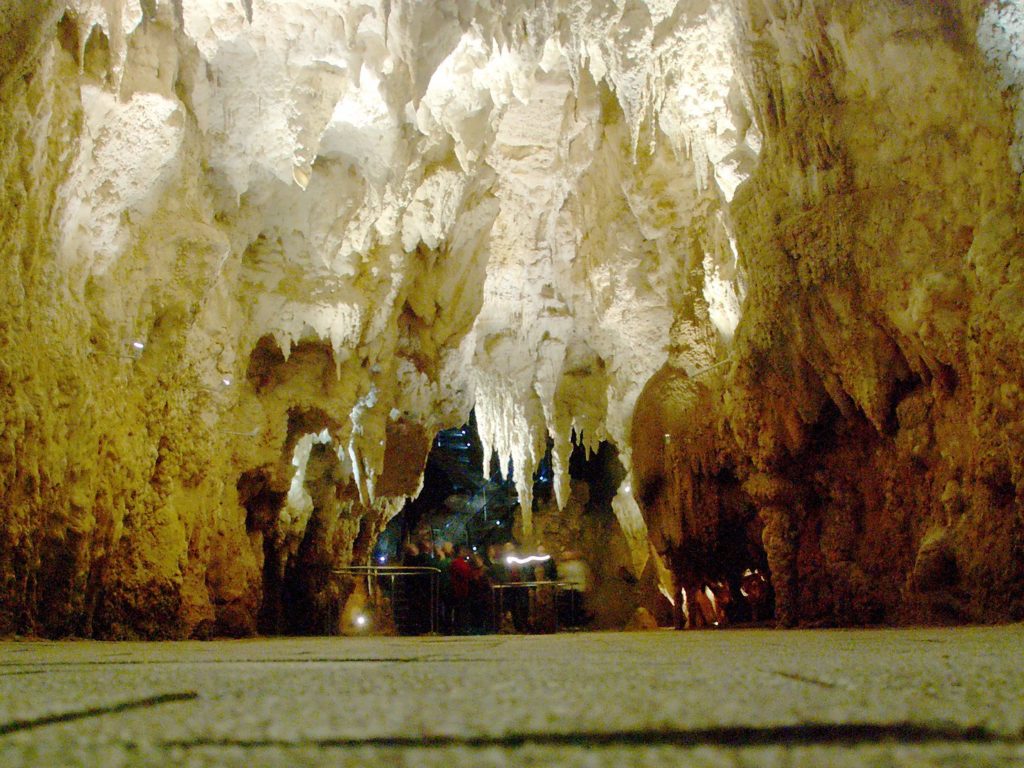
The attraction has a modern visitor centre at the entrance, largely designed in wood. There are organized tours that include a boat ride under the glowworms. The guided tour through the Waitomo Glowworm Caves brings the visitor through three different levels and begins at the top level of the cave and the Catacombs. The levels are linked by the Tomo, which is a 16 m vertical shaft made of limestone.
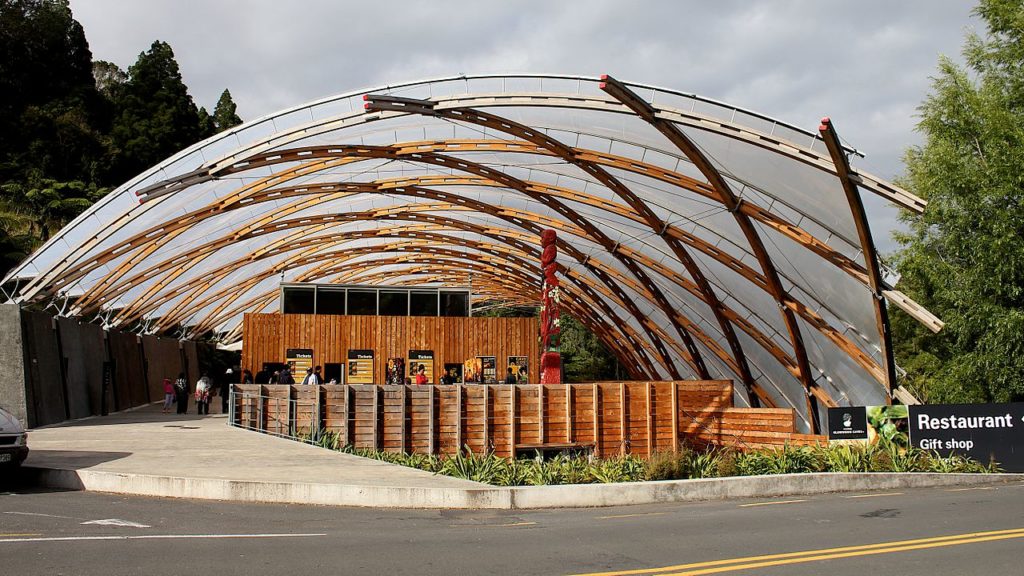
According to Wikipedia





